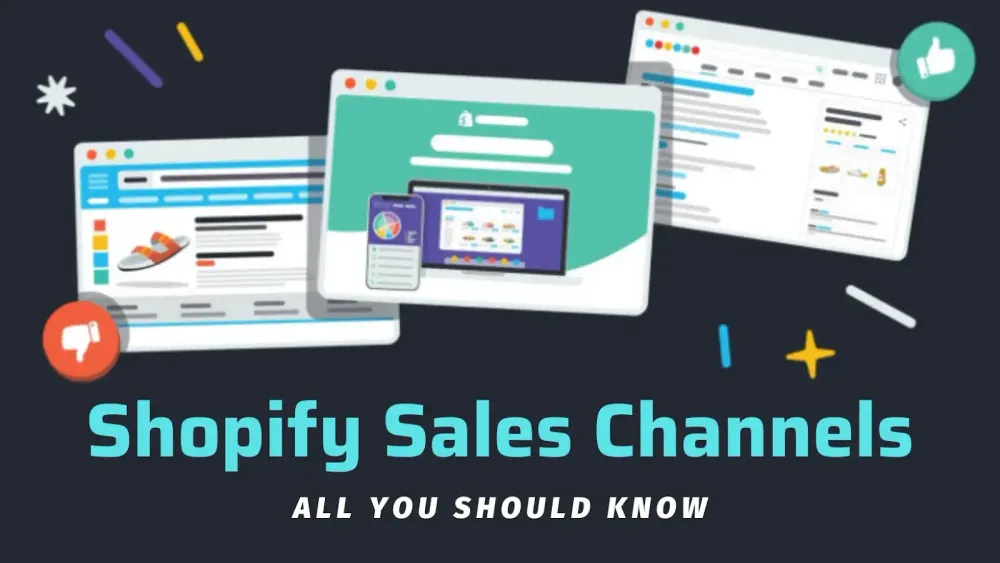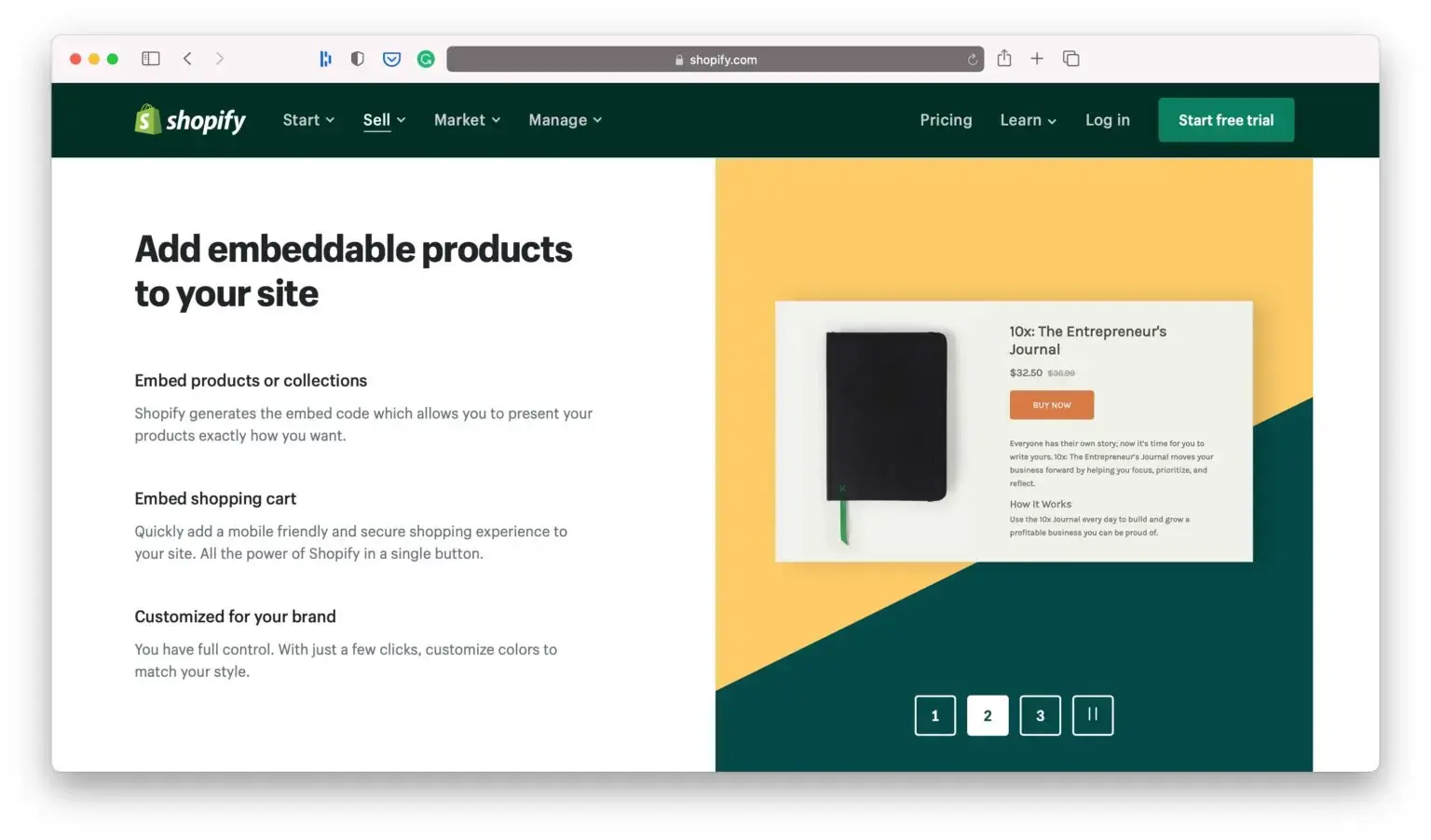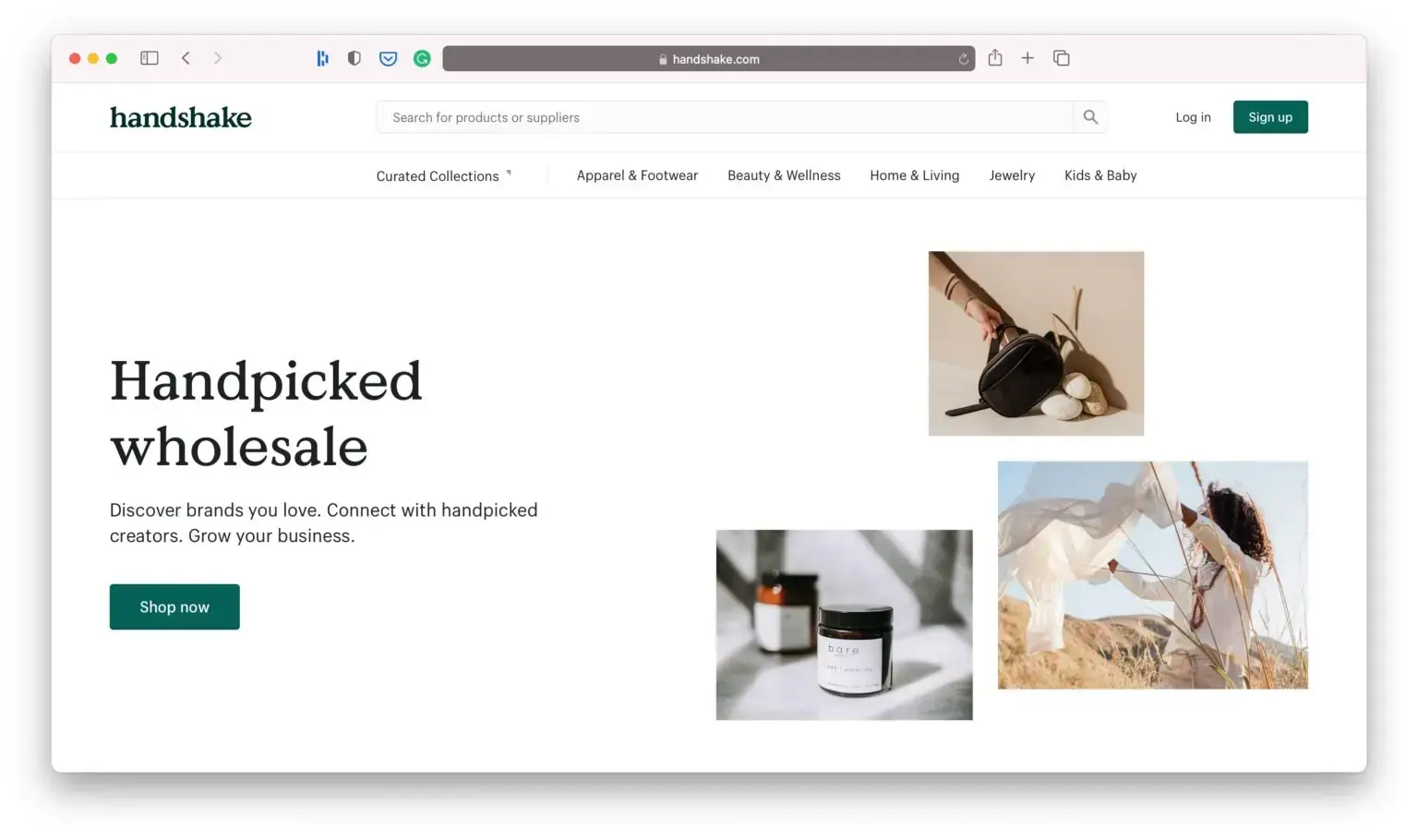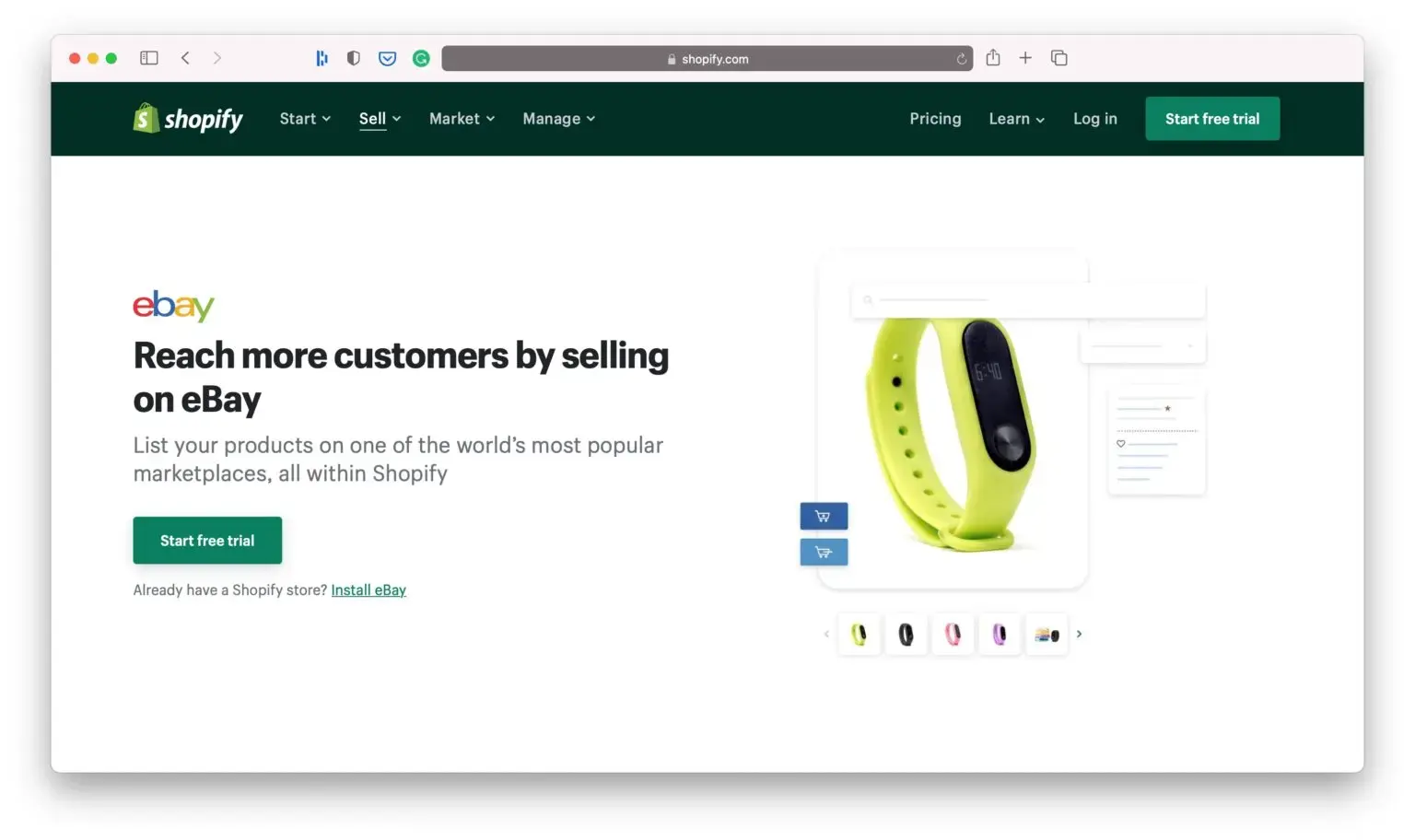Shopify Sales Channels: All You Should Know

When you are building an online business, building your own Shopify store is extremely important, but it is not the beginning of the journey.
Once you've built your store and launched your product range, you need to proactively bring your products to market before your competition.
One of the best things about Shopify is the seamless access it gives you to many other 'Shopify sales channels. These sales channels include a variety of different websites or marketplaces where you can sell your products.
In this article, I want to introduce Shopify sales channels, so you understand their benefits and how to set them up—because having a Shopify sales funnel will help you build a solid, multifaceted eCommerce business.
Let’s dive in!
What Are Shopify Sales Channels?
Shopify sales channels are different ways you can sell your products on Shopify. You can sell online using your own website, through online marketplaces, in brick-and-mortar stores, or using pop-up stores.
You can also sell via social media, using mobile apps, or by using print-on-demand services.
The sales channels you use will depend on your business and product. If you're selling physical goods, then you'll need to decide if you want to sell online, in a brick-and-mortar store, or both.
If you are selling digital products, then you will need to decide if you want to sell through your own website or through an online marketplace.
Sales Channels Shopify is the different ways you can sell your products on Shopify. You can sell online using your own website, through online marketplaces like Amazon and eBay, in brick-and-mortar stores, or using a pop-up store. You can also sell through social media platforms such as Facebook and Instagram, mobile apps such as the Shopify app for iOS and Android, or print-on-demand services such as Zazzle.
The sales channels Shopify use will depend on your business type and product. If you're selling physical goods, then you'll need to decide if you want to sell primarily online, primarily in brick-and-mortar stores, or both. If you're selling digital products (such as e-books and software apps), you'll need to decide whether you want to sell primarily through your own website or through an online marketplace.
Some of the Shopify sales channels
# 1: Shopify + Facebook Shop

Facebook is a terrific way to promote your brand's values and voice, whether you're posting about future promotions, starting debates, offering helpful content, and so on. Many shoppers choose to contact their favorite brands through social media. In fact, 63% of customers want firms to be present on social media and provide customer service. With that said, here are the advantages and disadvantages of selling from your Shopify store through your Facebook Shop.
The Pros of Shopify's Facebook shop sales channel
Over 30% of online customers get fresh ideas for purchases from social media, with 26% citing Facebook as their primary source.
Given these statistics, you'll be relieved to learn that combining your Shopify and Facebook Shop is simple. You don't need to upload your products more than once to sync them, so you can get started right away.
Other benefits include:
- You may also make your Facebook Shop page look more like a business.
- Products can be linked to Facebook postings that can be liked, commented on, and shared.
- When you launch your Facebook Shop, you can also set up an Instagram checkout (more on that in another section).
- Why would you miss out on this simple multichannel marketing opportunity if Facebook Shops are free? By taking this chance, you have nothing to lose and everything to gain!
The cons of Shopify's Facebook shop sales channel
- Potential users have complained that Facebook Shops take a long time to load, which may discourage some customers.
- You must follow Facebook's policies—not all content or items are permitted on Facebook.
- Facebook and Instagram Shops are presently only available to store owners in the United States. To sell on Facebook in any other country, buyers must be directed to your Shopify store.
#2: Shopify + Facebook Messenger

While we're on the subject of Facebook, it's worth noting that Shopify allows you to sell using the Facebook Messenger app. Customers can contact you using your Facebook Shop or business page's “Message Us” button.
Customers can also choose to receive order and delivery updates via the Facebook Messenger app when they check out. If this is the customer's preferred sales channel, it improves the shopping experience significantly.
You can also use a chatbot to run automatic Messenger campaigns and sell things straight through a Messenger discussion without having to be there.
The advantages of Shopify's Facebook Messenger sales channel
- In 2019, Messenger was the second most popular messaging app, after only WhatsApp. When you consider that 56% of messaging app users report requesting more information at all phases of the buyer's journey, it's evident that you could significantly expand your reach using Facebook Messenger.
- Small businesses may market and sell using this channel thanks to automated messaging campaigns. You don't need to hire somebody to answer the questions!
- If you already use Facebook as a sales channel, adding Messenger is simple.
The cons of Shopify's Facebook Messenger sales channel
- Buyers may expect speedier reaction times on social media if they're engaged on messaging platforms. This is a difficult standard to uphold for solopreneurs.
- This sales channel puts you in closer contact with your clients. As a result, you and your team must guarantee that you are fluent in customer service and prepared to scale if necessary.
#3: Shopify + Instagram Shop

As previously mentioned, creating a Facebook Shop comes with the added benefit of activating an Instagram Shop. You may now tag your products in Instagram posts and stories. Additionally, consumers may examine all of your products without ever leaving the app by clicking the “View Shop” link on your profile. They can then make a purchase by clicking “View on the Website.”
The pros of Shopify's Instagram shop sales channel
- If you already have a Facebook Shop, synchronizing your products to Instagram is simple and free.
- Instagram has over 1 billion monthly active users, with 81% using the platform to research products and services.
- Instagram is fantastic if you have aesthetically appealing products to display.
- It's a fantastic sales channel for influencer-focused firms.
The cons of Shopify's Instagram shop sales channel
- To sell on Instagram, you must have an Instagram business account with at least 100 followers.
- To link your items, you must have a Facebook page that is already set up to function with Shopify.
#4: Shopify + Amazon

Each month, Amazon receives almost 184 million visitors, and vendors claim a 50% increase in sales after joining the Amazon Marketplace.
With their Amazon sales channel, Shopify allows you to obtain a piece of that pie. You may track and manage your Amazon products here, as well as create new offers for Amazon products that are not part of your Shopify business.
To use Amazon as a Shopify sales channel, you must first create a professional seller account on Amazon Seller Central, which is easy to do.
The pros of Shopify's Amazon sales channel:
- Many customers prefer shopping on Amazon because of the selection, rapid comparisons, and speedy shipment timeframes. By listing things on Amazon, you put yourself in a position where shoppers can rapidly add your products to their cart with anything else they're buying.
- It enables you to drive customers to your Shopify store. Even if customers haven't heard of your Shopify store, they may be more willing to visit it after gaining trust in your brand through Amazon. This is especially true if you can personalize your product packaging with a link to your Shopify store.
- Selling on Amazon exposes your goods to a larger audience, allowing you to grow more quickly and easily.
The cons of Shopify’s Amazon sales channel
- You can only sell in US dollars or Canadian dollars.
- You must configure your Amazon channel to be in the same area as your Shopify store.
- You must have a return policy that is as good as or better than Amazon's.
- You must also fulfill orders through your Shopify dashboard, so Fulfillment by Amazon is not an option (FBA). As a result, you'll miss out on one of the most convenient Amazon product fulfillment choices.
#5: The Shopify Buy Button
Why not use these areas to sell your products if you're actively creating material on the web? The Shopify Buy Button can be included on any website or blog, including WordPress and Squarespace. To provide a flawless online purchase experience, the Buy Button connects consumers straight to your Shopify checkout.

The pros of the Shopify buy button:
- If you have a blog, the Buy Button makes it simple to sell from it. For example, if you're writing instructions or evaluations of your own items, you can include a buy button to allow people to purchase straight away.
- It is simple to include a buy button on your website.
The cons of the Shopify buy button:
The Buy Button has one minor restriction: you should not use it directly on your Shopify store or blog because it may interfere with your checkout process. It's advisable to utilizes the Shopify Buy Button on external blogs/sites hosted on other platforms (such as WordPress or Squarespace), and preloads
your cart on your Shopify site with a URL rather than the Buy Button.
#6: Shopify + The Handshake Marketplace

If wholesale is important to your business, you should look at the Handshake Marketplace, which is a marketplace of approved Shopify merchants offering wholesale products.
You can apply to the Handshake Marketplace to list your company and products, and if accepted, retailers will be able to find and buy from you. Isn't it simple?
The pros of the handshake marketplace:
- Users of Shopify do not have to pay commissions or listing fees.
- Because Shopify validates all stores on Handshake, your buyers may have confidence in your authenticity right away.
- You can change the appearance of your supplier profile to fit your brand.
- Set wholesale rates and minimum order quantities.
- Shipping and return policies can be customized.
- Orders for Handshake can be completed through your Shopify admin area.
The cons of the handshake marketplace:
- Handshake is only available if you set your store currency to USD and your location to the United States.
- While Handshake is easier to set up and run than a standalone wholesale shop, it still requires you to create and administer a profile.
#7: Shopify + Google
When we consider “sales channel,” we don't normally think of Google; nonetheless, when Googlers search for things, Google offers results in its “Shopping” tab. The best part is that Google will list your stuff for free!

Shopify can automatically sync your items and store details with the Google Merchant Center, eliminating the need for you to manually list your products on Google.
The pros of Shopify’s Google sales channel
- Many clients with purchasing intent use Google for primary product research; as a result, this platform can increase brand exposure as well as sales.
- Free campaigns are difficult to resist, and putting your products via the Google Sales channel is also free!
The cons of Shopify’s Google sales channel
- If you have a Google Ads account as well as a Google Merchant Center account, you will appear on Google's Shopping tab.
- Ads are not automatically tailored. To create more focused campaigns, you must do it directly from within your Google Ads account.
- Only eligible US stores can receive free Google shopping tab listings.
#8: Shopify + Walmart Marketplace

Selling on the Walmart Marketplace is another excellent Shopify sales channels choice. Once your Shopify store is up and running, you may apply to sell on the Walmart Marketplace, and once accepted, you can begin selling to their 120+ million monthly online visitors.
There are no setup or subscription fees to sell on the Walmart Marketplace through your Shopify store, and you can monitor all of your sales right in your Shopify dashboard, as with the other Shopify sales channels on this list.
The pros of Shopify’s Walmart marketplace sales channel
- Get your goods in front of the 120+ million monthly online visitors to the Walmart Marketplace.
- There are no installation or subscription expenses.
- Manage all of your sales and customers from the Shopify dashboard.
- It is simple to add products to the Walmart Marketplace.
- You can add an unlimited number of products and change your listings in bulk.
The cons of Shopify's Walmart marketplace sales channel:
- Sellers must be based in the United States and have a US tax ID.
- Sellers' products must contain UPC or GTIN codes.
- Products must meet certain criteria in order to be offered on Walmart.com.
- Products must meet Walmart's service standards.
#9: Shopify + eBay

eBay is one of the most popular online marketplaces, and you can integrate your Shopify store with eBay directly to reach more people and sell more things.
Shopify's Walmart marketplace sales channel has the following benefits:
- Use eBay's massive consumer base to reach out to more people.
- List products quickly and manage them all from your Shopify dashboard.
- Use eBay's built-in messaging tool to communicate with your customers.
- It also works with PayPal.
Shopify's Walmart marketplace sales channel has the following cons:
- eBay.com (US), eBay.ca (Canada), eBay.com.au (Australia), eBay.co.uk (United Kingdom), and eBay.de are the current eBay sales channels (Germany).
- You cannot sell directly on overseas eBay sites.
Conclusion
The sales funnels we've highlighted here take just a few minutes to set up—but their impact is huge. These Shopify sales channels will help you expand your store's reach and reach new heights.


